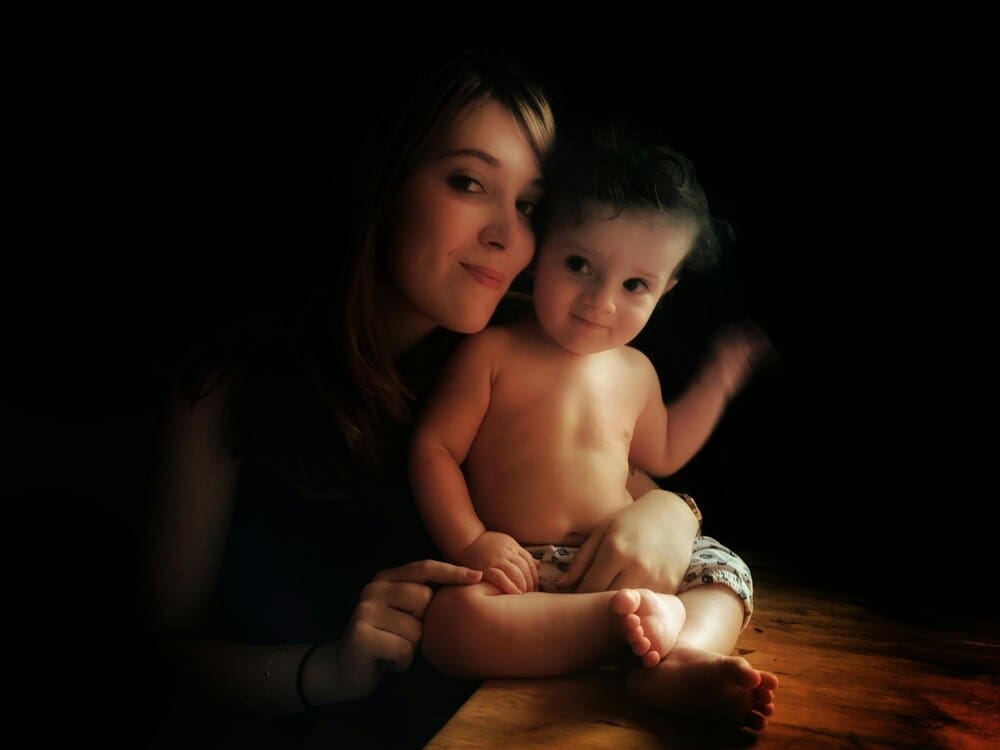Postpartum depression is a serious but treatable medical condition that affects up to one in seven new mothers, characterized by intense feelings of sadness, anxiety, and exhaustion that can interfere with their ability to care for themselves or their newborn. Occurring anytime within the first year after childbirth, this mood disorder is not a character flaw or a sign of weakness, but a complication of giving birth, driven by a complex interplay of dramatic hormonal shifts, psychological stress, and social factors. For mothers and their families, understanding the signs, seeking a timely diagnosis, and accessing effective treatment are the most critical steps toward recovery and ensuring the well-being of both parent and child.
What is Postpartum Depression?
The transition to motherhood is a profound life change, often accompanied by a whirlwind of powerful emotions. While many new mothers experience a brief period of moodiness and tearfulness, it is crucial to distinguish this from the more severe and persistent condition of postpartum depression (PPD).
More Than Just the “Baby Blues”
The “baby blues” are very common, affecting as many as 80 percent of new mothers. These feelings, which can include mood swings, anxiety, and sadness, typically begin a few days after delivery and resolve on their own within two weeks. They are considered a normal part of the postpartum adjustment, linked to the sudden hormonal changes and sleep deprivation that follow childbirth.
Postpartum depression, however, is different. It is a clinical mood disorder that is more intense, lasts much longer, and can significantly impair a woman’s ability to function. Unlike the baby blues, PPD does not simply go away on its own and requires professional intervention to manage effectively.
The Spectrum of Perinatal Mood and Anxiety Disorders (PMADs)
It’s also important to recognize that PPD is part of a broader category of illnesses known as Perinatal Mood and Anxiety Disorders (PMADs). This spectrum includes postpartum anxiety, postpartum obsessive-compulsive disorder (OCD), and, in rare cases, postpartum psychosis, a severe condition that requires immediate medical attention. Understanding this spectrum helps contextualize PPD as one of several potential mental health challenges parents can face during the perinatal period, which spans from pregnancy through the first year postpartum.
Recognizing the Signs of PPD
The symptoms of postpartum depression can vary widely from person to person, and they can emerge gradually or appear quite suddenly. Recognizing these signs is the first step for both the mother experiencing them and the family members supporting her.
Emotional Symptoms
The emotional toll of PPD is often its most defining feature. A mother may experience persistent and profound sadness, crying for what feels like no reason. She might feel overwhelmed by the responsibilities of motherhood, plagued by feelings of worthlessness, shame, or guilt, believing she is a bad mother.
Other common emotional signs include severe mood swings, intense irritability or anger, and a frightening difficulty in bonding with her baby. This lack of connection can be particularly distressing and can fuel a cycle of guilt and sadness.
Behavioral and Physical Symptoms
PPD also manifests in a person’s behavior and physical state. A new mother might withdraw from her partner, family, and friends, losing interest in hobbies and activities she once enjoyed. Changes in appetite are common, leading to either eating much more or much less than usual.
Overwhelming fatigue and a complete lack of energy, beyond the normal exhaustion of new parenthood, is a hallmark sign. Sleep patterns are often severely disrupted—either an inability to sleep (insomnia) even when the baby is sleeping, or sleeping too much. In the most severe cases, a mother may have recurrent thoughts of harming herself or her baby, which are medical emergencies that require immediate help.
Symptoms in Fathers and Partners
Mothers are not the only ones at risk. Fathers and non-birthing partners can also experience PPD, a condition known as Paternal Postnatal Depression, affecting an estimated one in ten new fathers. Symptoms in men may present differently, often appearing as increased anger, irritability, risk-taking behaviors, or physical complaints like headaches and stomach problems.
What Causes Postpartum Depression?
There is no single cause of postpartum depression. Rather, it is believed to result from a combination of physical, emotional, and lifestyle factors. It is essential to remember that it is a medical condition, not something a mother brings upon herself.
Hormonal Shifts
The physical changes after childbirth are immense. During pregnancy, levels of the hormones estrogen and progesterone are at an all-time high, but they drop dramatically within hours of delivery. This abrupt hormonal shift can trigger depression in a way similar to how smaller hormonal changes can cause premenstrual mood swings.
Additionally, levels of thyroid hormones can also drop after birth, leading to symptoms that mimic depression, such as fatigue, sluggishness, and mood changes. A simple blood test can determine if this is a contributing factor.
Psychological and Emotional Factors
A personal or family history of depression, bipolar disorder, or anxiety significantly increases the risk of developing PPD. The immense psychological stress of caring for a completely dependent newborn, coupled with chronic sleep deprivation, can overwhelm anyone’s coping abilities. Many women also grapple with a sense of lost identity, body image concerns, and the pressure to be a “perfect” mother.
Social and Environmental Risk Factors
A strong support system is a powerful protective factor against PPD. Conversely, feeling isolated or lacking support from a partner, family, or friends can heighten the risk. Other major stressors, such as relationship conflict, financial worries, or a difficult or traumatic birth experience, can also contribute to the onset of the disorder.
Getting Help: Diagnosis and Treatment
The most important message for anyone struggling with PPD is that help is available and recovery is possible. Overcoming the stigma and shame associated with mental illness is often the hardest, but most crucial, step.
How is PPD Diagnosed?
Diagnosis typically begins with a screening from a healthcare provider, such as an OB-GYN, a primary care physician, or even the baby’s pediatrician. They may use a standardized screening tool, like the Edinburgh Postnatal Depression Scale (EPDS), which is a simple ten-question survey to assess symptoms. An honest conversation about feelings and symptoms is essential for an accurate diagnosis.
Therapy and Counseling
Psychotherapy, or talk therapy, is a highly effective, first-line treatment for PPD. Cognitive Behavioral Therapy (CBT) helps individuals identify and change negative thought patterns and behaviors, while Interpersonal Therapy (IPT) focuses on improving relationships and resolving interpersonal conflicts that may contribute to depression. Therapy provides a safe space to process difficult emotions and develop healthy coping skills.
Medication
For moderate to severe PPD, antidepressants are often recommended, sometimes in combination with therapy. These medications can correct the chemical imbalances in the brain that contribute to depression. Many new mothers worry about taking medication while breastfeeding, but healthcare providers can prescribe antidepressants that are considered safe and have a low risk of passing into breast milk.
How Family and Friends Can Help
The support of a partner, family, and friends is invaluable for a mother recovering from PPD. Loved ones are often the first to notice that something is wrong and can play a vital role in encouraging her to seek help.
For Partners
Partners can offer practical support by taking on more household chores and baby care, allowing the mother to rest. More importantly, they can provide emotional support by listening without judgment, validating her feelings, and consistently reminding her that she is a good mother who is facing a medical illness. Helping to schedule appointments and offering to go with her can make seeking treatment feel less daunting.
For Friends and Extended Family
Vague offers like “Let me know if you need anything” can put the burden back on the struggling mother. Instead, offer specific, practical help: “I’m bringing dinner over on Tuesday,” “Can I come hold the baby for two hours so you can nap?” or “Let me do your laundry for you.” A short visit focused on helping the mother, rather than just seeing the baby, can make a world of difference. Above all, listen and affirm that what she is feeling is real and treatable.
Building Resilience: Self-Care Strategies
While self-care is not a substitute for professional treatment, it is a powerful complement that can aid in recovery and help build long-term resilience.
Prioritizing Rest
The old advice to “sleep when the baby sleeps” is often easier said than done, but making rest a top priority is essential. This means resisting the urge to do chores during naps and accepting help from others to get uninterrupted blocks of sleep whenever possible.
Nourishment and Movement
A healthy diet can have a positive impact on mood and energy levels. Gentle exercise, such as a daily walk with the baby in a stroller, can act as a natural antidepressant by releasing endorphins and reducing stress. Getting outside for fresh air and sunlight can also provide a significant mental boost.
Connecting with Others
Isolation fuels depression. Making an effort to connect with other new mothers, whether through a local support group or an online community, can combat feelings of loneliness. It helps to hear from others who understand the unique challenges of this period, validating one’s own experience.
Postpartum depression is a common complication of childbirth, but it does not have to be a defining feature of motherhood. It is a treatable illness, and no mother should have to suffer through it alone. By fostering open conversations, reducing stigma, and ensuring robust support systems are in place, we can help mothers and families navigate this challenging period and move toward a future of health, healing, and joy.














